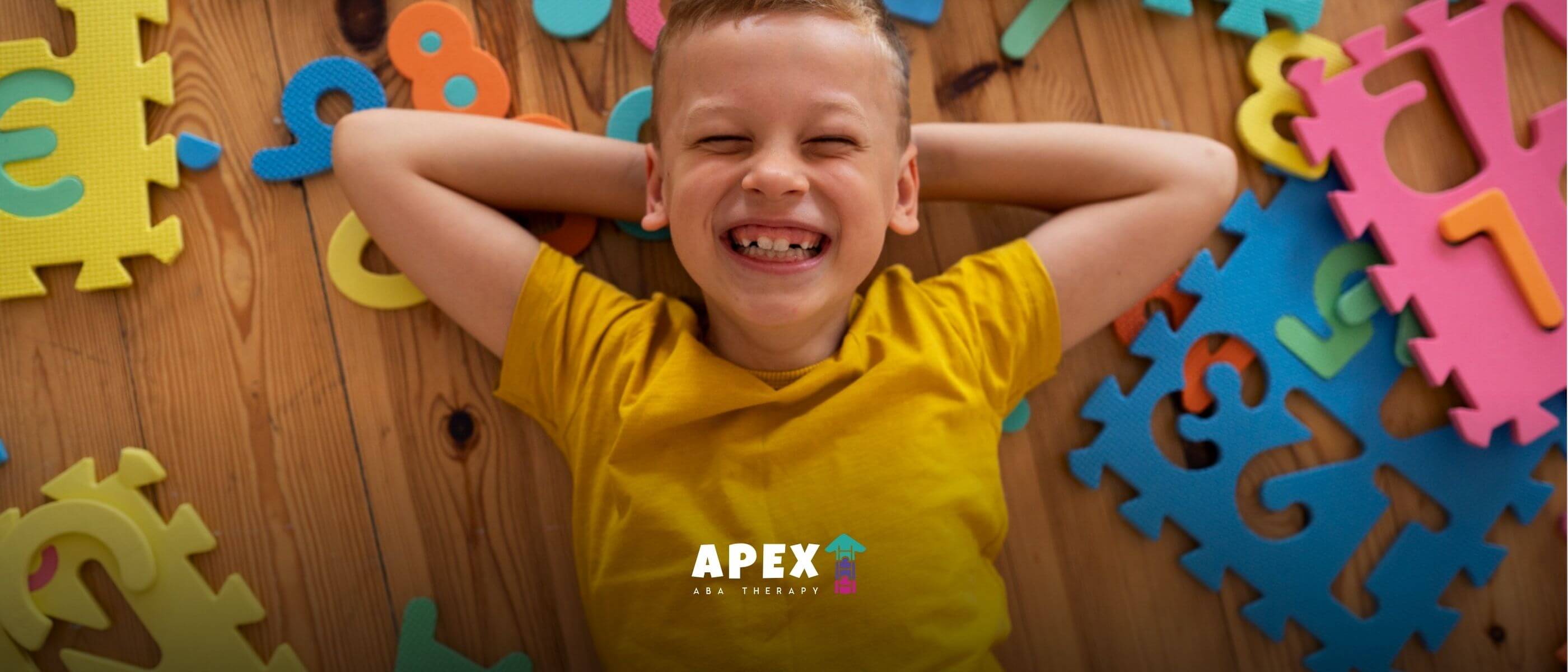Do Amish Kids Get Autism?
Explore the prevalence of autism in Amish children and uncover the factors that may contribute to this phenomenon. Delve into the unique characteristics of Amish communities and their impact on autism rates.

Do Amish Kids Get Autism?
Hey there, let's talk about sensory processing issues!
If you or a loved one has autism, you may have heard the term "sensory processing issues" thrown around before. But what exactly does that mean? Basically, sensory processing issues refer to difficulties with how the brain processes and responds to sensory information from the environment.
In this article, we'll explore the link between autism and sensory processing issues, and discuss some of the challenges that can come with these issues. But don't worry, we'll also offer some strategies for coping and managing these challenges. So let's dive in!

Challenges in diagnosing autism in the Amish community
Diagnosing autism can be a complex and challenging process, and this is especially true for communities like the Amish, who may face unique cultural and logistical barriers to accessing medical care. Here are a few of the challenges that can arise:
Cultural barriers and differences in beliefs
One of the biggest challenges in diagnosing autism in the Amish community is the presence of cultural barriers and differences in beliefs. For example, some families may view autism as simply a part of their child's personality or temperament, rather than as a medical condition that requires intervention. This can make it difficult to convince parents to seek out diagnostic evaluations or therapy.
Limited access to medical professionals and resources
Another challenge is the limited access to medical professionals and resources that is common in many rural communities, including those with large Amish populations. This can make it difficult for families to find specialists who are knowledgeable about autism or who can provide diagnostic evaluations.
Lack of awareness and understanding of autism
Finally, there is often a lack of awareness and understanding of autism in the Amish community, which can contribute to delayed diagnosis and treatment. Without access to information about the signs and symptoms of autism, families may not recognize when their child is struggling or may attribute their behavior to other causes.
Addressing these challenges will require a multifaceted approach that involves education, outreach, and collaboration between medical professionals and members of the Amish community. By working together, we can help ensure that all children receive the care and support they need to thrive.

Analyzing factors influencing autism rates in Amish children.
While the prevalence of autism in Amish communities remains a subject of debate and research, there are several factors that are thought to contribute to the higher rates of autism observed in these populations. Here are a few examples:
Genetic factors
One possible explanation for the higher rates of autism in Amish communities is genetic factors. Research has suggested that certain genetic mutations may be more common in Amish populations, which could increase the risk of autism and other developmental disorders.
Environmental factors
Another potential factor is environmental influences. For example, some researchers have suggested that exposure to pesticides or other toxins commonly used in agricultural settings could contribute to the development of autism. Given that many Amish families live and work on farms, this could be an important area of investigation.
Parental factors
Finally, it's worth considering the role that parental factors may play in the prevalence of autism among Amish children. For example, some researchers have suggested that high rates of consanguinity (marriage between close relatives) could increase the risk of genetic mutations associated with autism.
It's worth noting that these factors likely interact with one another in complex ways, and that much more research is needed to fully understand the root causes of autism in Amish communities. However, by continuing to explore these factors and working to support families affected by autism, we can help ensure better outcomes for all children.
Understanding the prevalence of autism in the Amish community
Autism is a complex and multifaceted condition that affects individuals from all walks of life. However, there is evidence to suggest that rates of autism may be higher in certain groups, including the Amish community. Here's what we know about autism prevalence in this population:
Brief history of autism diagnosis and prevalence in the US
The first diagnostic criteria for autism were established in the 1940s, but it wasn't until the 1980s that autism began to be recognized as a distinct condition. Since then, rates of autism diagnosis have increased dramatically in the US, with some estimates suggesting that as many as 1 in 36 children may be affected.
Studies on autism rates in the Amish community
Several studies have explored the prevalence of autism within Amish communities, with mixed results. Some studies have suggested that rates of autism among Amish children are significantly higher than in the general population, while others have found no significant differences.
Comparison of autism rates between Amish and non-Amish populations
While it's difficult to draw definitive conclusions about autism prevalence among the Amish, some comparisons to non-Amish populations may be informative. For example, one study found that rates of autism among Amish children were higher than in nearby non-Amish communities. However, it's worth noting that these comparisons can be complicated by differences in diagnostic criteria, access to medical care, and other factors.
Overall, understanding the prevalence of autism in the Amish community remains an important area of research. By continuing to investigate this topic and working to support families affected by autism, we can help ensure that all individuals receive the care and support they need to thrive.
Understanding the link between autism and sensory processing issues
If you're familiar with autism, you may already know that many individuals with this condition experience sensory processing issues. But what exactly does that mean, and why is there a connection between the two?
Well, to put it simply, sensory processing issues refer to difficulties with how the brain processes and responds to sensory information from the environment. This can manifest in a number of ways for individuals with autism, such as hypersensitivity to certain sounds or textures, or difficulty processing visual information.
So why is there often a link between autism and sensory processing issues? While scientists don't have a definitive answer, some theories suggest that it may be related to differences in how the brain develops and processes information in individuals with autism.
Regardless of the exact cause, it's important to recognize that sensory processing issues can significantly impact daily life for individuals with autism. In the next section, we'll explore some of the specific challenges that can come with these issues.
What are the different types of sensory processing issues?
Sensory processing issues can manifest in a variety of ways for individuals with autism. Here are a few examples of the different types of sensory processing issues that someone with autism may experience:
Hypersensitivity to sensory input
Some individuals with autism may be hypersensitive to certain types of sensory input, meaning that they may feel overwhelmed or distressed by certain sounds, textures, or other sensations. For example, a person with hypersensitivity may be unable to tolerate loud noises, bright lights, or scratchy clothing.
Hyposensitivity to sensory input
On the other hand, some individuals with autism may be hyposensitive to certain types of sensory input. This means that they may not notice or respond to certain stimuli in the environment in the same way that most people do. For example, a person with hyposensitivity may not feel pain in the same way as others, or may not notice when someone is speaking to them.
Mixed sensory processing issues
Finally, it's worth noting that many individuals with autism experience a combination of hypersensitivity and hyposensitivity to different types of sensory input. This can make it difficult to navigate and interact with the environment in a typical way.
Understanding the specific sensory processing issues that someone with autism is experiencing can be an important step in providing appropriate support and accommodations. In the next section, we'll explore some of the challenges that can come with these issues and discuss some strategies for coping.
How do sensory processing issues impact individuals with autism?
Sensory processing issues can have a significant impact on daily life for individuals with autism. Here are a few examples of how these issues may impact someone's functioning and well-being:
Effects on daily life and functioning
For many individuals with autism, sensory processing issues can make everyday activities more challenging. For example, they may struggle to tolerate certain types of clothing or find it difficult to navigate crowded or noisy environments. This can make it harder to engage in social activities, attend school or work, or simply enjoy leisure time.
Challenges in school or work environments
In addition to the challenges of daily life, sensory processing issues can also impact performance in school or work environments. For example, someone who is hypersensitive to sound may find it difficult to concentrate in a noisy classroom or office. Similarly, someone who is hyposensitive to touch may struggle with fine motor tasks such as writing or typing.
Potential impact on mental health and well-being
Finally, it's worth noting that sensory processing issues can have a significant impact on mental health and well-being for individuals with autism. The stress and frustration of constantly navigating an overwhelming environment can take a toll on anyone's mental health, and this is especially true for individuals with autism who may already be dealing with other challenges.
While sensory processing issues can be difficult to manage, there are strategies and accommodations that can help. In the next section, we'll explore some of these strategies in more detail.
Coping with sensory processing issues
While sensory processing issues can present significant challenges for individuals with autism, there are strategies and accommodations that can help. Here are a few examples:
Sensory integration therapy
One common approach to managing sensory processing issues is through sensory integration therapy. This type of therapy involves working with an occupational therapist to gradually expose someone to different types of sensory input in a structured and supportive environment. Over time, this can help the individual develop better tolerance and coping skills.
Environmental modifications
Another strategy for managing sensory processing issues is through environmental modifications. This might include things like using noise-cancelling headphones to block out distracting sounds, or providing a quiet space where someone can go when they need a break from overstimulating environments.
Other coping strategies
In addition to these more formal approaches, there are also a number of other coping strategies that individuals with autism may find helpful. For example, some people find that using weighted blankets or other types of pressure can help to soothe and calm them. Others may benefit from practicing mindfulness or meditation to help manage stress and anxiety.
It's worth noting that everyone's experience with sensory processing issues is unique, and what works for one person may not work for another. However, by exploring different strategies and accommodations, it's possible to find ways to manage these challenges and live a fulfilling life.
Recognizing and addressing sensory processing issues in individuals with autism
In conclusion, sensory processing issues can be a significant challenge for individuals with autism. However, by understanding the different types of issues that can arise, as well as the strategies and accommodations that can help, it's possible to provide better support and understanding for those who are affected.
FAQs
Is autism more common in the Amish community?
While there is still much research to be done on this topic, some studies have suggested that rates of autism may be higher in Amish communities compared to the general population. However, other studies have found no significant differences. It's worth noting that comparisons can be complicated by differences in diagnostic criteria and access to medical care.
Why might rates of autism be higher in the Amish community?
A: There are several factors that could contribute to higher rates of autism in Amish communities, including genetic factors, environmental influences such as exposure to pesticides or other toxins, and high rates of consanguinity (marriage between close relatives).
What can be done to support families affected by autism within the Amish community?
Addressing these challenges will require a multifaceted approach that involves education, outreach, and collaboration between medical professionals and members of the Amish community. By working together, we can help ensure that all children receive the care and support they need to thrive.
Are there any cultural considerations or beliefs related to disability within the Amish community?
Yes, there are certain cultural beliefs within the Amish community that may influence attitudes towards disability. For example, some members may view disability as a punishment from God or believe that it is caused by sin. It's important for medical professionals and others working with the community to be aware of these beliefs and to approach disability in a culturally sensitive manner.
Summary
To recap, here are a few of the key points we've covered in this article:
- Sensory processing issues are common in individuals with autism and can manifest in a variety of ways.
- Hypersensitivity, hyposensitivity, and mixed sensory processing issues are all possible.
- These issues can have a significant impact on daily life, as well as in school or work environments.
- Strategies such as sensory integration therapy, environmental modifications, and other coping strategies can all be helpful in managing these challenges.
Implications for greater understanding and support
By recognizing and addressing sensory processing issues in individuals with autism, we can create greater understanding and support for those who are affected. This might involve advocating for more inclusive environments that take into account the needs of individuals with sensory processing issues. It might also involve supporting research into new therapies or accommodations that can help individuals manage these challenges more effectively.
Ultimately, by working together to address these challenges, we can help individuals with autism to thrive and live fulfilling lives.
Sources
- https://www.usatoday.com/story/news/factcheck/2023/07/24
- https://healthfeedback.org/claimreview
- https://www.reuters.com/article/factcheck-amish-children-idUSL1N39D0IN
- https://www.kff.org/health-information-trust/debunked-autism-claims-resurface-after-press-conference-and-supreme-court-to-hear-cases-on-conversion-therapy-and-school-vaccine-mandates/
- https://pubmed.ncbi.nlm.nih.gov/19302947/
- https://www.statnews.com/2025/10/02/amish-autism-rates-research-challenges-diagnosis-culture/
- https://publichealthcollaborative.org/alerts/anti-vaccine-myth-that-amish-children-dont-have-autism-resurfaces/
Frequently Asked Questions
Do Amish children ever get diagnosed with autism?
Yes — studies have confirmed that autism does occur among Amish children.
Does cultural context affect how ASD is identified or reported among the Amish?
Yes. Cultural values, differences in schooling structure, and attitudes toward disabilities may influence whether behavioral differences are recognized as ASD, whether families seek diagnosis, or how caregivers answer screening or diagnostic questions — which can affect prevalence rates.
If autism is present among Amish children, why is there still so little data?
Research in Amish communities faces challenges: relatively small and dispersed populations, limited participation in large‑scale public health studies, potential reluctance to engage with mainstream medical or research institutions, and difficulty adapting standard diagnostic tools across cultural contexts.

How to Teach Kitchen Safety to Autistic Children: A Parent’s Guide
Teaching kitchen safety to autistic children is easier with the right strategies. Learn step-by-step tips to create a safe environment and build essential skills.

How to Manage Attention-Seeking Behaviors in a Positive, Supportive Wayr
Learn how to reduce attention-seeking behaviors in children using positive reinforcement, clear boundaries, and communication skills. Find helpful strategies here.

Can Play Therapy and ABA Therapy Work Together to Help Your Child?
Combining play therapy with ABA therapy offers a powerful way to enhance your child’s growth. Find out how these therapies work together for lasting benefits.



